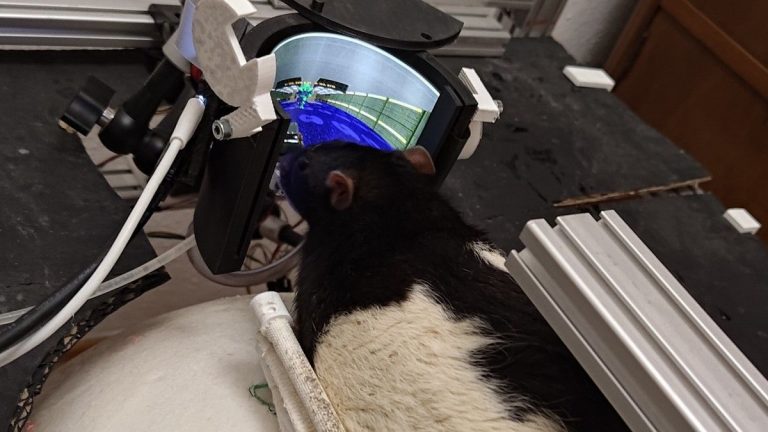Could your gaming keyboard be considered cheating? According to some Counter-Strike, Overwatch and Valorant players: Hell yes. An ongoing debate in these game communities is whether a setting on some analogue gaming keyboards called last input priority SOCD, or ‘Snap Tap’ by Razer, is actually a big no-no or not.
This issue stems from this: tweaking SOCD might make you a better shot in competitive shooters. It also might make you harder to hit. It’s most effective in Counter-Strike, for reasons we’ll get to shortly. Though it can also be used to some benefit in Valorant and to run a pretty dirty tactic in Overwatch 2, involving a large degree of hitbox manipulation.
Let’s talk CS, as it’s a flash point for the SOCD debate. A technique called counter strafing is an important part of mastering competitive play in CS2.
It works like this: say I’m holding the A key to move to the left in CS2, when I release that key, I come to a stop. However, if I try to shoot during that transition my accuracy will be very low. So I’ll need to wait a little longer to shoot, and at a higher level of competitive play, that’s death. To increase my accuracy and response time, I could instead try holding the A key, and when I want to come to a halt, briefly hitting the D key. It might seem trivial but this will cut my movement time and hugely improve my accuracy. Importantly, this is all able to happen in the blink of an eye.
That’s what’s known as counter-strafing—and it’s a tough skill to master in CS. Think of what happens if you mess it up: You hit A, then D, but you’ve not entirely let go of A yet. You come to a dead stop, as each key press cancels the other out, you’re a sitting duck. Boom, dead.
So, what if I told you a gaming keyboard could take all the pain and 100s of hours of practising out of it? That’s what SOCD offers.
What is SOCD?
“Insane”, one Reddit thread says.
“This is bulls**t,” says a user in another.
SOCD actually stands for Simultaneous Opposite Cardinal Direction. Games deal with SOCD in different ways, but it can be programmed by some gaming keyboards—at this time, Razer’s Huntsman V3 lineup and any Wooting keyboard—to allow for two keys to be pressed simultaneously but only one key’s input to be registered by a system.
It’s a catchy name, right? SOCD… that’s probably why Razer called it ‘Snap Tap’ instead when it unleashed the feature to furious debate in its Huntsman V3 gaming keyboards. It is the ability for a keyboard to interpret two key presses and automatically favour the last one pressed. That’s why you’ll see SOCD referred to as ‘last pressed priority’—this is the SOCD approach that allows a keyboard to take two inputs and give priority to the one most recently pressed.
SOCP is easy enough to set up, as I’ve done here on my Wooting 60HE. (Image credit: Wooting)
That’s important when it comes to something like counter-strafing in CS. You hit A, then D, then A, then D, and every time you get perfect transitions with maximum aim accuracy. You can fire directly at players while making yourself a tougher target to hit, without the need to bother with 10,000 hours of practice to learn how to do it.
It also offers improvements in other shooters, such as Overwatch, and you can see for yourself in this great video from optimum. The issue for that game is less about specific strafing techniques and more about spamming strafing left and right repeatedly to make yourself a difficult target to hit, all while retaining your own high weapon accuracy.
“Doing it this way makes counter-strafing very easy. And that’s why it’s bad,” Simon Whyte, lead software engineer at Wooting, tells me.
You might be surprised to hear one of the proponents of the feature’s introduction on a gaming keyboard telling me it’s actually bad. Though Wooting doesn’t pull any punches about the feature, despite implementing it. It did so on the back of a poll that was overwhelmingly in favour of adding it.
Should we implement last input priority SOCD, similar to Snap Tap?July 22, 2024
“If you do it on the computer, it will get you banned. But if you do it on the keyboard, it’s fine. That, to us, doesn’t really line up,” Wooting co-founder and CTO, Jeroen Langelaan, says.
“Everyone should be able to do it or no one should be able to do it,” Whyte adds.
That’s not actually Whyte making a case for everyone buying a Wooting keyboard. SOCD is possible without. It doesn’t require any specialised tech whatsoever. Fighting games have been using last input priority for a while and it could just as easily be done in software or be implemented by a game’s developers. You could even macro it, in what is essentially known as a null bind.
“They can also develop CS in a way that it does last input priority and everybody gets it. That’s all the better way to do it because then every keyboard performs exactly the same,” Langelaan says.
“Everyone should be able to do it or no one should be able to do it.”
Simon Whyte, Wooting
The problem for anyone hoping to run some simple SOCD software and save themselves the hassle of buying a new gaming keyboard is that in most competitive shooters anyways, you’d be banned for doing so.
The developer of rhythm game Osu! suggests any sort of hardware-level key macro will get a player sent to the naughty corner (cheater category).
And yet SOCD on Razer and Wooting keyboards has been given the sign-off by some of the largest CS tournament organisers in the world. For now, at least.
I ask Wooting if they’d prefer to see the feature banned or embedded into competitive shooters by default: “Either one of them has to happen, in my opinion,” Whyte says.
On one side, implementing SOCD across the board within the game itself would remove any claims of a game being “pay to win” through specific gaming hardware that not everyone has access to. On the other, it won’t do much to solve some of the bitterness generated by those players who have spent a large amount of time to nail a complex and difficult technique to gain a competitive advantage in a game.
(Image credit: Future)
We might have a clue as to how some game developers would approach this problem, though. When Wooting released a Wooting Double Movement for Fortnite, it allowed players to benefit from a particular quirk of analogue movement for rapid building. In response, Epic added the feature to the game, making all third-party tools like Wooting’s irrelevant.
Whether a game like CS2 would benefit from everyone having easy counter-strafing—that’s one for the players to hash out. Who knows if Valve would even consider it. It might change the meta entirely, or it might not do much at all. How you feel about that probably comes down to how much you think SOCD on a keyboard is cheating to begin with.
I tend to fall on the side of seeing SOCD features in hardware as cheating unless everyone has access to it. Chatting to Wooting is what convinced me of that, actually. The reason being the feature is actively ignoring player input with an aim to unnaturally improve their gaming ability, which is about as clear a definition of cheating in any other context.
What about Rappy Snappy and Rapid Trigger?
(Image credit: Wooting)
What’s great for a keyboard nerd such as myself is this particular PC-specific problem can be better explained by understanding the basics of how a keyboard switch works. I can correlate your gaming performance in CS2 to phrases such as ‘actuation point’, ‘reset point’ and ‘Hall effect’.
The actuation point of a switch is when the switch registers a key press. That’s usually around 2 mm (for a Cherry MX Red, for example). The reset point is just above it. This means when you press a key, it sends a signal at a set point, and when you release it, it stops sending the signal at a set point.
Simple, except some clever clogs came up with the idea of analogue switches. These can measure the entire range of the key’s motion, up and down, as they don’t come with a physical metal contact point. They use light or magnets (Hall effect or induction, mostly the former) instead.
Rappy Snappy is not the same as Snap Tap.
Wooting
For a while, analogue gaming keyboards such as the Wooting One focused on using their newfound abilities to offer movement akin to an analogue stick. Other features such as adjustable actuation points (you can set it to practically whatever you like) and Rapid Trigger (the reset point is dynamically set depending on how far the key is pressed) have now become the hottest features to have. These features actively reduce latency and allow for more rapid, responsive inputs. That matters for competitive gaming.
This is important as Rapid Trigger can be used in conjunction with SOCD to even greater effect. But it’s not exclusive. Any keyboard could offer last input priority, only Wooting and Razer’s do.
“Any good keyboard can do it. And it should just be a software thing that determines it instead of the keyboard basically overriding the game behaviour, because that’s what it’s doing now.”
Wooting does, however, offer a feature using the analogue switches to a similar effect. It’s called Rappy Snappy, which is categorically “not the same as Snap Tap”, says Wooting. You got that? These two things are not the same.
It’s sort of like Rapid Trigger, except the actuation and reset points of one switch are determined by the other.
Rappy Snappy is monitoring user intention by continuously comparing the press depth between 2 keys.If you intend to press both, you can press them both to the end, and they’ll both be active.If you didn’t intend it, e.g.You’re holding down A, accidentally press D passed…July 11, 2024
We’re undoubtedly going to see even more cases like this occur in PC gaming. What’s cheating and what’s a competitive advantage across gaming hardware can feel obvious at times and less so at others.
MSI’s AI gaming monitor that spots enemies for you? Widely considered cheating. A keyboard with actuation and reset points that are dynamically set as you play? Fair game. But then what’s the point in buying the $150 gaming mouse versus the $20 one? Surely it’s the fact one offers a competitive edge: the sensor is better, the polling rate higher, and the shortcuts easier to reach. One promises to make you a better gamer, though we’d widely consider more slippery feet for your mouse not to be a form of digital doping.












